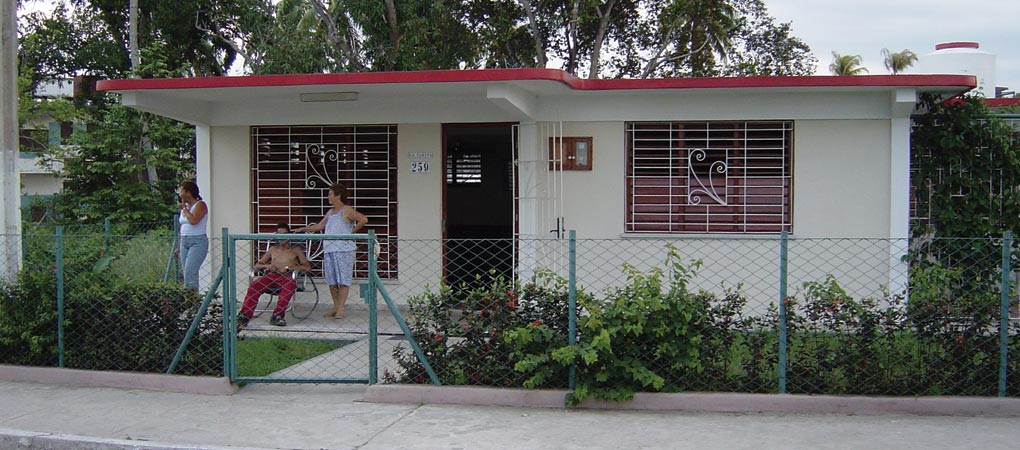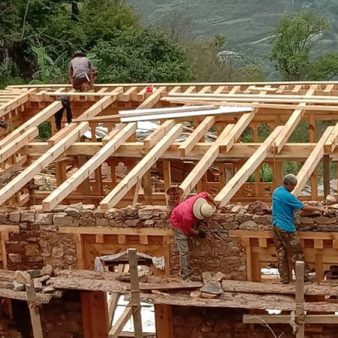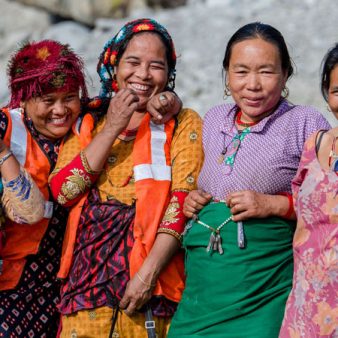Established as a pilot programme in 1994, the Architect in the Community Programme now covers the whole of Cuba, providing affordable technical support to households who are building or renovating their homes on a self-help basis. The programme is self-funding and has to date been used by over 500,000 households. The participative design approach that it uses provides households with skills and confidence as well as better living conditions. It has an international reputation for its work and is currently being replicated in other Latin American countries as well as being piloted in South Africa.
Aims and Objectives
To provide affordable technical support to households who are building or renovating their homes on a self-help basis.
Located in the Caribbean, Cuba has a population of 11.3 million. Its health and education indicators and population growth rates are comparable with those of many developed countries. Shanty-style developments around the towns and cities are virtually unknown. With the collapse of communism in 1990, the external support that had been given to Cuba by the USSR and the East European states ceased virtually overnight. The resulting severe economic crisis led to a halt in the state housing programmes and it was necessary to look for alternative means of providing housing. These new approaches included providing support for self help construction, the development of locally produced building materials and technical assistance for the population by offering design and other housing services.
The Architects in the Community Programme (PAC) was established as a pilot programme in 1994 by the National Housing Institute, together with Habitat Cuba (a local NGO) and two local governments to help meet these needs. Its basic remit was to offer the Cuban people professional services to improve their housing conditions and to improve their quality of life. It began with 24 architects working in two municipalities. It proved highly successful and has since been extended to cover the entire country and there are currently over 630 architects working in 157 of Cuba’s 169 municipalities. It is a continuing programme and over 500,000 families have been assisted to date and ever increasing numbers of households are using its services.
In the 40 years of the Castro regime, 1,500,000 dwellings have been built in Cuba, of which almost a third have been self-built. As elsewhere in the world, this self-build housing has been of poor quality. Although mainly built of strong materials, construction quality is poor, more materials than necessary are used and rooms are too small. Ventilation is inadequate and internal layout is not good. In urban areas there are inadequate infrastructure connections.
The Architects in the Community Programme uses a participative design approach developed by the famous community architect from Argentina, Rodolpho Livingston. His methods are taught to all architects working for the programme. Families who wish to use the Architects in the Community Programme services go to its local office for advice. An architect then visits the home when all the family is present and identifies through a series of planning and design methods the needs and wishes of the family in terms of their housing for the future. Detailed measurements are also carried out of the property and four or five design alternatives are drawn up and discussed with the family before a final design is developed.
The emphasis is upon developing an individual solution for each family’s circumstances rather than using a set of standard repetitive solutions. The need to ensure the best possible solution for the least possible cost is also a very important consideration. Some families build a second-storey, others build to the side or simply rearrange the internal divisions in the house to give a better allocation of internal space and improved ventilation. The architects help the families to obtain the necessary building permits for the work and then help to supervise the construction, giving advice and support where needed. A quick and efficient service is provided with a minimum of bureaucracy and delay.
The Programme is seen not only as a technical programme but also a social programme in that it is developing the skills and the confidence of the people. Good working relationships are established between the family and the architect and the typical divide between architect and client is broken down with respect on both sides. Families refer with pride to ‘our architect’. The architects live in the communities where they work and so they have a good working knowledge of the circumstances and problems faced by the people and are able to incorporate this knowledge in their design solutions. In urban areas the architects also co-operate with the local planning authorities to ensure a more integrated improvement to the environment. As a result of the programme people are more aware of the condition of their locality and seek to continue to try and improve the quality of the environment that they live in.
One of the main advantages of the programme is that it is affordable and accessible to everyone. On average the cost of the services of the architect for a total project is Pesos 250 (approximately $10) and the construction cost is Pesos 14,000 ($560) with a typical income per household being Pesos 350 ($14) per month. A costed list of the range of services provided by the architects is available so the families are clearly able to see what the different levels of work will cost them. For those households without any means of support these fees are met by the social security system. On average each architect carries out 16 – 20 projects and services a month, some of which are more complex than others. Payment incentives are used for the architects by which they receive a basic monthly salary of Pesos 310 if they produce Pesos 500 and up to Pesos 465 if they produce Pesos 750 or more. Now they are studying a new salary system by which they would receive a bigger per cent of the cost of work carried out in addition to the normal workload. This means that architects would be able to earn between Pesos 800 – 1,300 per month ($39-50).The architects are committed to their work and see themselves as much as social workers as architects, helping to solve the difficulties faced by the families in their daily lives.
The programme is self-funding with the fees paid by the families covering its costs. The total income of the Programme in 2000 was $428,000 and expenditure was $304,000. The surplus on activities is returned as a contribution to the national budget. The government provides $15,000 a year to purchase those items such as drawing paper, ink and pens that can only be purchased with hard currency and does not provide any further support. The provincial PAC offices are equipped with computers and design work is carried out using CAD systems. The only external support received by the programme was in the initial development phase in 1994 when European NGO’s gave computers and $25,000 to help get the programme going. No further external support is anticipated or needed.
While the construction work is primarily carried out using concrete block and clay tiles, plans are currently underway to produce suitable earthen blocks and to train architects in their use. This will help to overcome the delays caused when local supplies of cement run short, as for example when there are additional construction needs due to large scale hurricane damage. Ceramic hollow tiles and bricks are also currently being used in four provinces. Where there are appropriate environmental conditions, the use of bamboo as a building material is also being promoted. Environmentally sustainable solutions are also promoted with the households by encouraging recycling of water and the re-use of existing building materials.
The Programme is now well established and the architects are able to carry out other services to support the government in the registration of properties. On-going professional development is carried out for all architects with regular opportunities for the different offices to meet and discuss their work and share good practice. Quality control systems are in place to ensure that high standards continue to be applied across the country.
Its core principles of being accessible to everyone and doing better with less has ensured that the Programme is of interest in many other developing countries. The programme has received many international visitors a similar programme has been established in Uruguay by the Society of Architects. The government of South Africa is developing an agreement with Cuba so they will receive in the future months and currently pay for twelve of the PAC architects to spend two years in South Africa establishing a similar approach there. The Society of Architects in Argentina is trying to develop similar experiences and the Peruvian Ministry of Housing has shown interest in the Programme.
Partnership
National government, professional, local community



